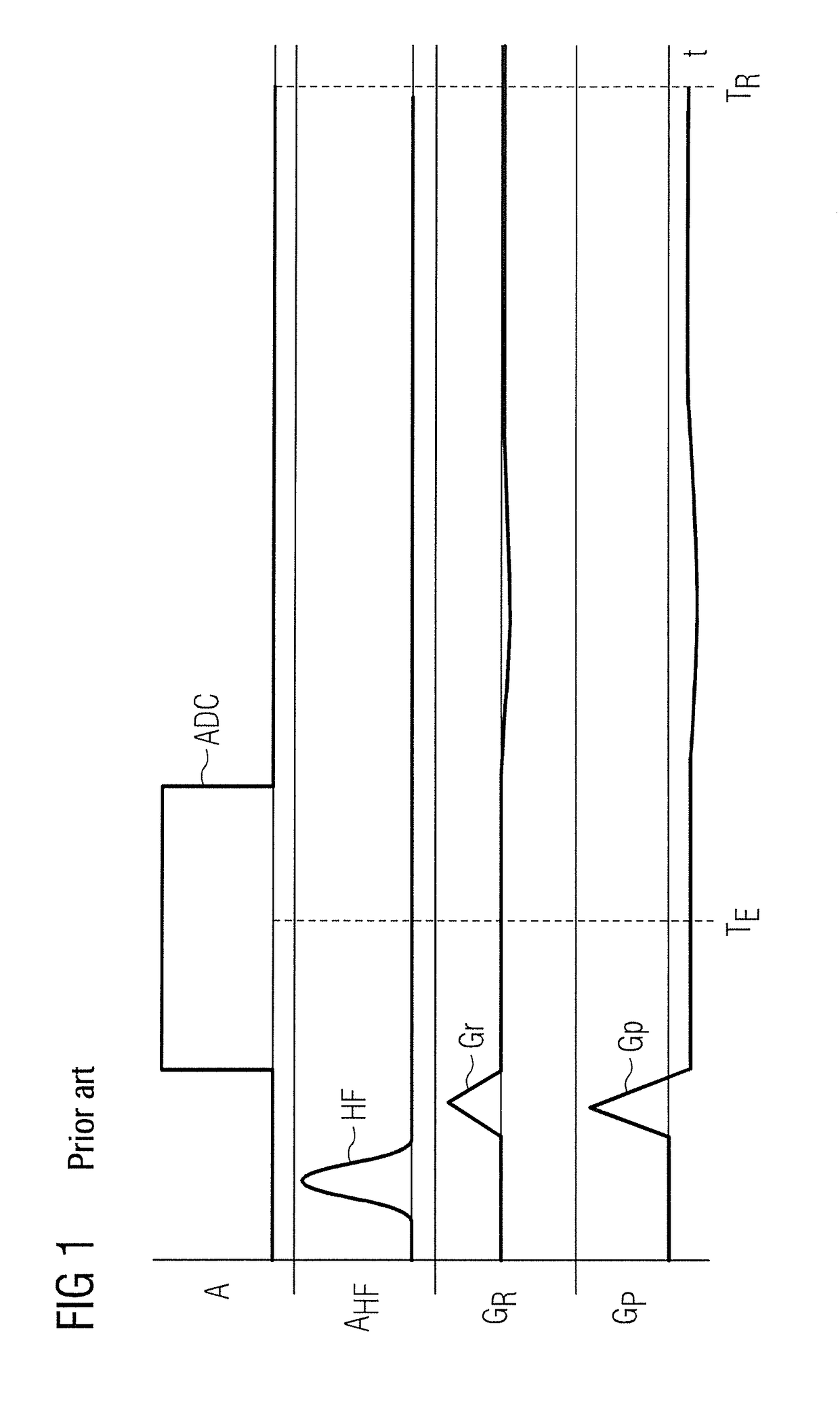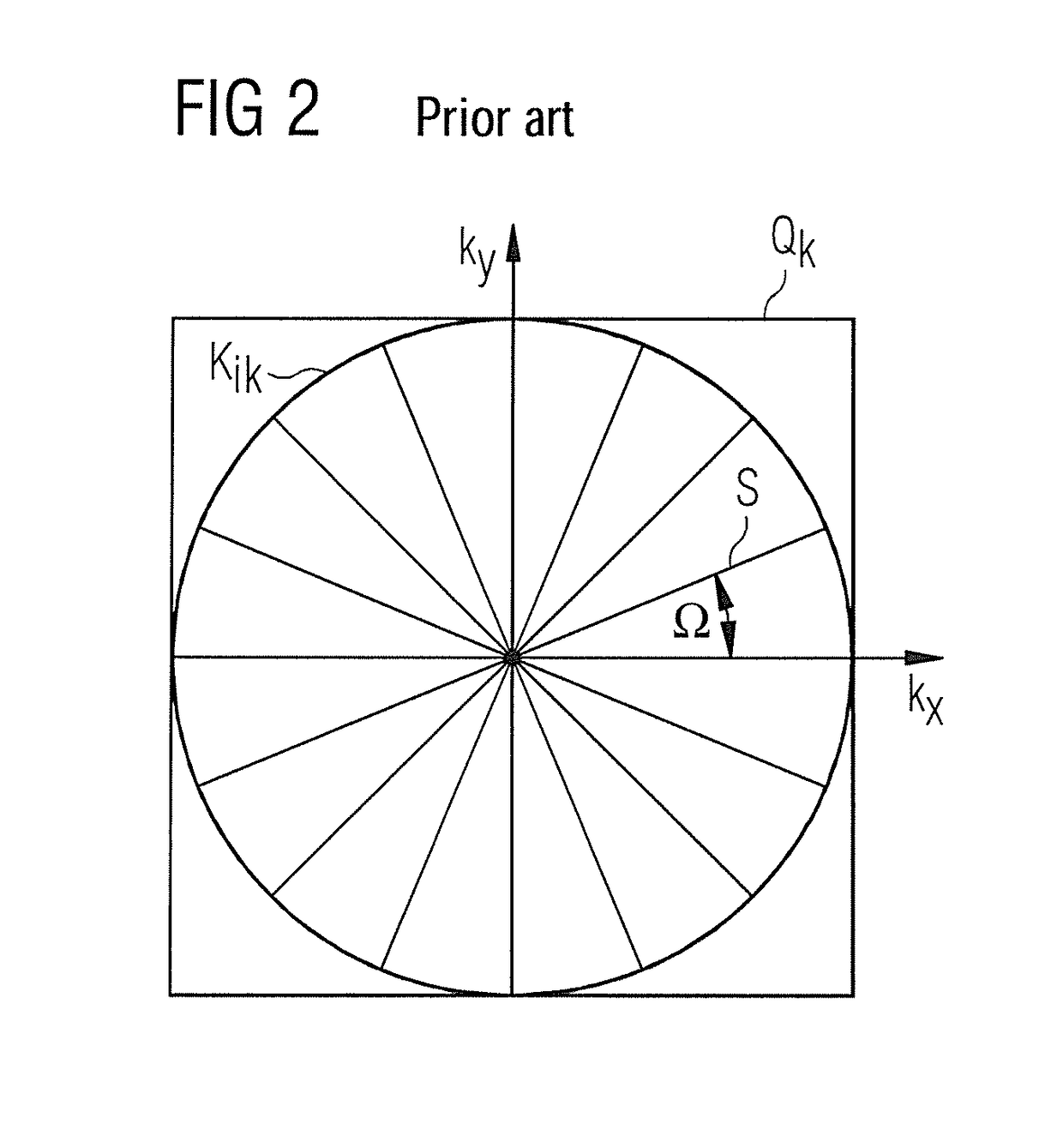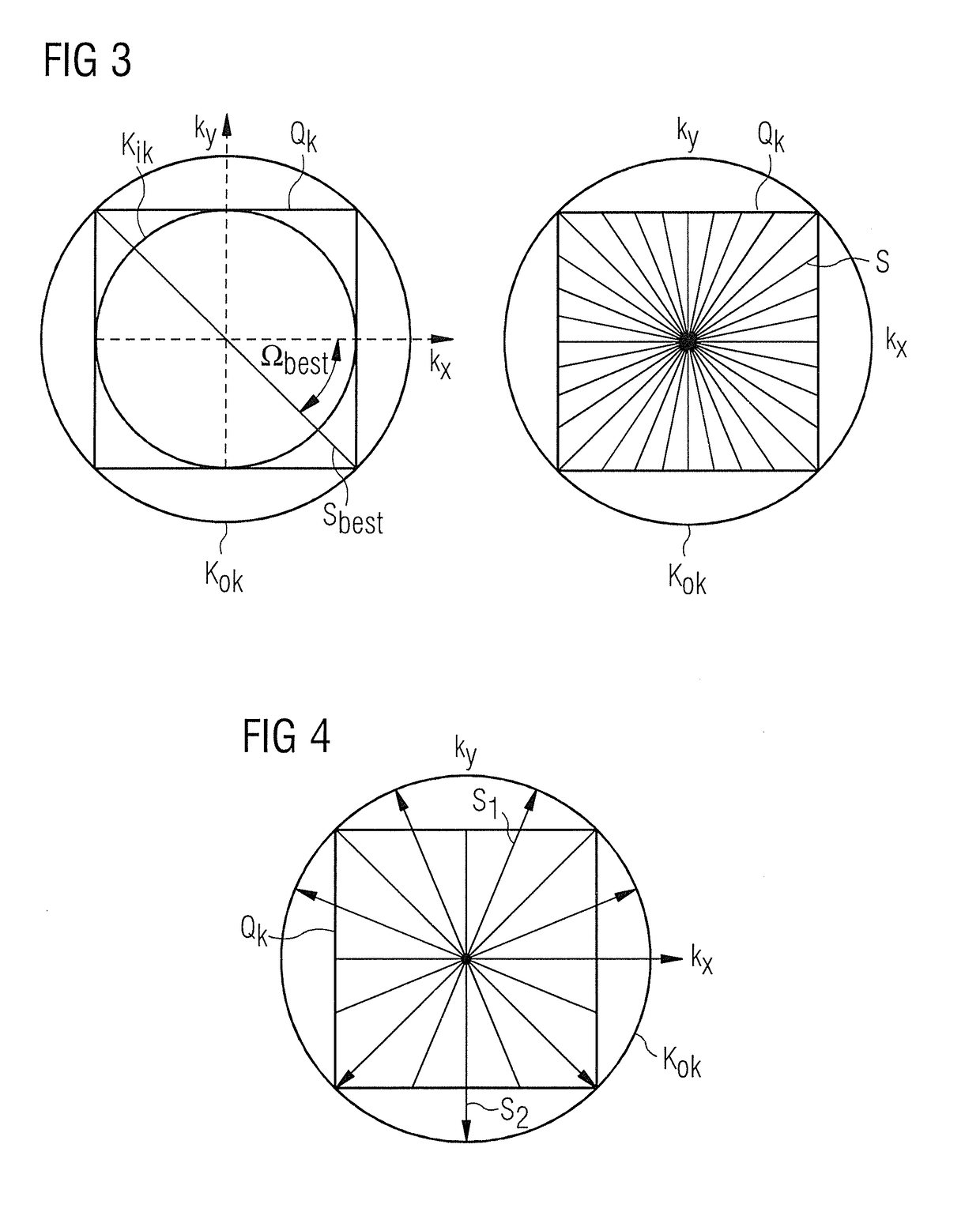Method and apparatus for sectional optimization of radial mr pulse sequences
a technology of radial mr pulse sequence and optimization method, which is applied in the direction of magnetic measurement, measurement using nmr, instruments, etc., can solve the problem of reducing the value of imaging parameters without exceeding the limit value, and achieve the reduction of the time parameters of the pulse sequence used, shorten the time parameters of the pulse sequence, and shorten the length of the individual trajectories
- Summary
- Abstract
- Description
- Claims
- Application Information
AI Technical Summary
Benefits of technology
Problems solved by technology
Method used
Image
Examples
Embodiment Construction
[0047]FIG. 1 shows a pulse sequence diagram that has four lines and shows a section of a gradient echo pulse sequence, referred to as a repetition, for the radial magnetic resonance imaging. In the pulse sequence diagram, the amplitude A of the pulse is plotted over time t in each case. A readout window is shown in the first line. Magnetic resonance signals can be captured during a rectangular readout pulse ADC. An RF excitation pulse RF having an amplitude ARF is shown in the second line, this pulse being emitted at the start of the pulse sequence section and resulting in a precession of magnetic moments in an examination region of an examination object. The third line of the pulse sequence diagram illustrates a readout gradient Gr and the profile of its amplitude GR, this gradient causing k-space to be sampled in a radial direction. The fourth line illustrates a phase gradient Gp and the profile of its amplitude GP. This gradient establishes the phase or the associated angle Ω in ...
PUM
 Login to View More
Login to View More Abstract
Description
Claims
Application Information
 Login to View More
Login to View More - R&D
- Intellectual Property
- Life Sciences
- Materials
- Tech Scout
- Unparalleled Data Quality
- Higher Quality Content
- 60% Fewer Hallucinations
Browse by: Latest US Patents, China's latest patents, Technical Efficacy Thesaurus, Application Domain, Technology Topic, Popular Technical Reports.
© 2025 PatSnap. All rights reserved.Legal|Privacy policy|Modern Slavery Act Transparency Statement|Sitemap|About US| Contact US: help@patsnap.com



